Disassembly
Remove those screws and remove the HDD:

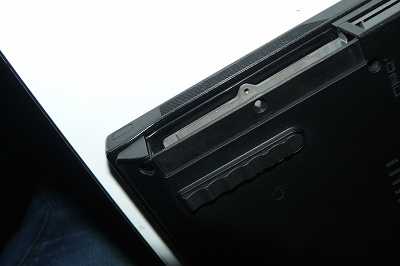
Lift off the palm rest:

Lift up the keyboard, pull it back a bit, flip it over like that and then disconnect it from the board:



Gently wedge both sides loose:
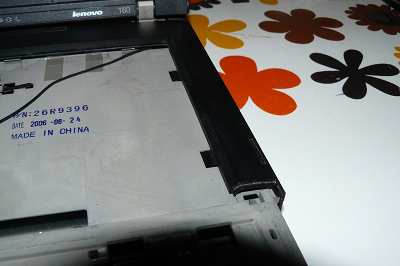

Remove that cable from the position:


Now remove that bezel. Remove wifi, nvram battery and speaker connector (also remove 56k modem, on the left of wifi):
Reason: has direct (and very fast) memory access, and could (theoretically) leak data over a side-channel.
Wifi: The ath5k/ath9k cards might not have firmware at all. They might safe but could have
access to the computer's RAM trough DMA. If people have an intel
card(most T60 laptops come with Intel wifi by default, until you change it),then that card runs
a non-free firwamre and has access to the computer's RAM trough DMA! So
the risk-level is very high.
Remove those screws:
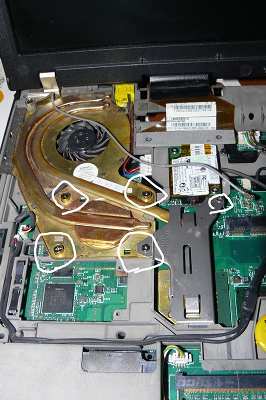
Disconnect the power jack:
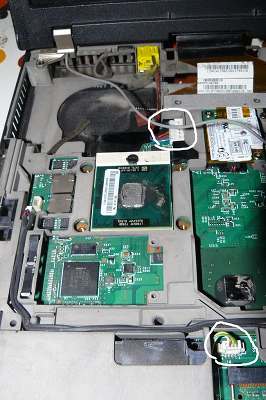
Remove nvram battery (we will put it back later):

Disconnect cable (for 56k modem) and disconnect the other cable:


Disconnect speaker cable:

Disconnect the other end of the 56k modem cable:
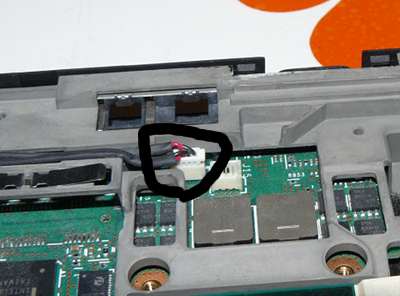
Make sure you removed it:

Unscrew those:

Make sure you removed those:

Disconnect LCD cable from board:

Remove those screws then remove the LCD assembly:


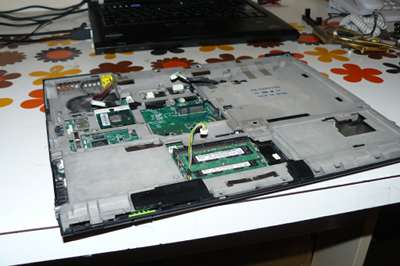
Once again, make sure you removed those:

Remove the shielding containing the motherboard, then flip it over. Remove these screws, placing them on a steady
surface in the same layout as they were in before you removed them. Also, you should mark each screw hole after removing the
screw (a permanent marker pen will do), this is so that you have a point of reference when re-assembling the system:
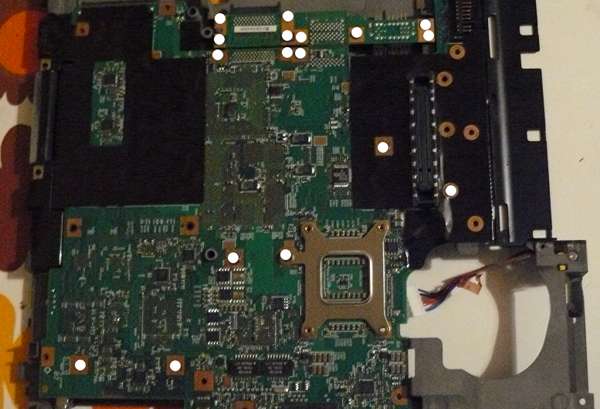
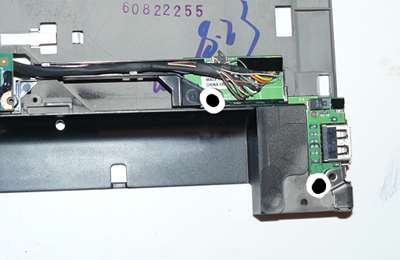

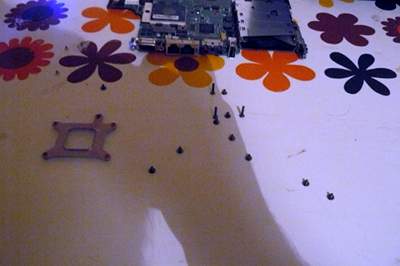


Remove microphone (soldering iron not needed. Just wedge it out gently):
Rationale:
Another reason to remove the microphone: If your computer gets[1] compromised, it can
record what you say, and use it to receive data from nearby devices if
they're compromised too. Also, we do not know what the built-in microcode (in the CPU) is doing; it could theoretically
be programmed to accept remote commands from some speaker somewhere (remote security hole). In other words,
the system could already be compromised from the factory.
Remove infrared:


Remove cardbus (it's in a socket, no need to disable. Just remove the port itself):
Rationale:
It has direct memory access and can be used to extract sensitive details (such as LUKS keys). See
'GoodBIOS' video linked at the end (speaker is Peter Stuge, a coreboot hacker). The video covers X60
but the same topics apply to T60.
Before re-installing the upper chassis, remove the speaker:

Reason: combined with the microphone issue, this could be used to leak data.
If your computer gets[1] compromised, it can be used to
transmit data to nearby compromised devices. It's unknown if it can be
turned into a microphone[2].
Replacement: headphones/speakers (line-out) or external DAC (USB).
Remove the wwan:
Wwan (3g modem): They run proprietary software! It's like AMT but over the GSM network which is
probably even worse.
Replacement: external USB wifi dongle. (or USB wwan/3g dongle; note, this has all the same privacy issues as mobile phones. wwan not recommended).
This is where the simcard connector is soldered. See notes above about wwan. Remove simcard by removing battery
and then it's accessible (so, remember to do this when you re-assemble. or you could do it now?)

Put those screws back:

Put it back into lower chassis:
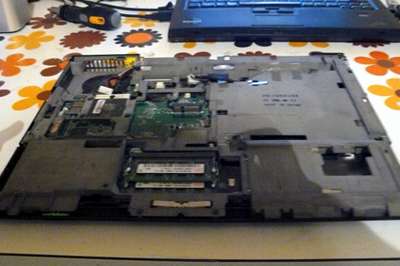
Attach LCD and insert screws (also, attach the lcd cable to the board):

Insert those screws:

On the CPU (and there is another chip south-east to it, sorry forgot to take pic)
clean off the old thermal paste (with the alcohol) and apply new (Artic Silver 5 is good, others are good too)
you should also clean the heatsink the same way

Attach the heatsink and install the screws (also, make sure to install the AC jack as highlighted):
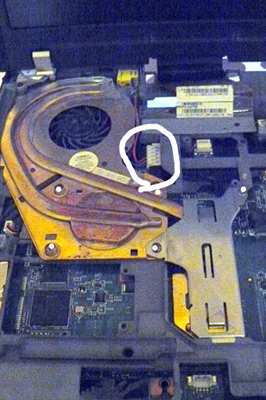
Reinstall that upper bezel:

Do that:


Attach keyboard and install nvram battery:


Place keyboard and (sorry, forgot to take pics) reinstall the palmrest and insert screws on the underside:

Remove those covers and unscrew:



Gently pry off the front bezel (sorry, forgot to take pics).
Remove bluetooth module:
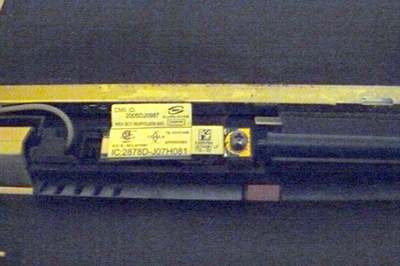

Re-attach the front bezel and re-insert the screws (sorry, forgot to take pics).
It lives!



Always stress test ('stress -c 2' and xsensors. below 90C is ok) when replacing cpu paste/heatsink:





